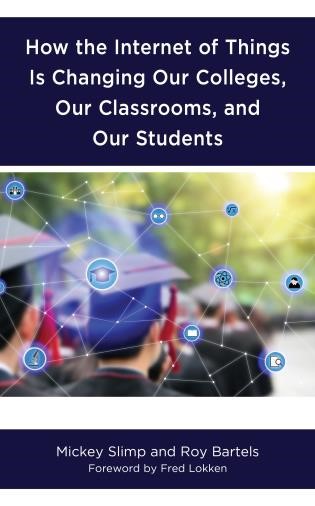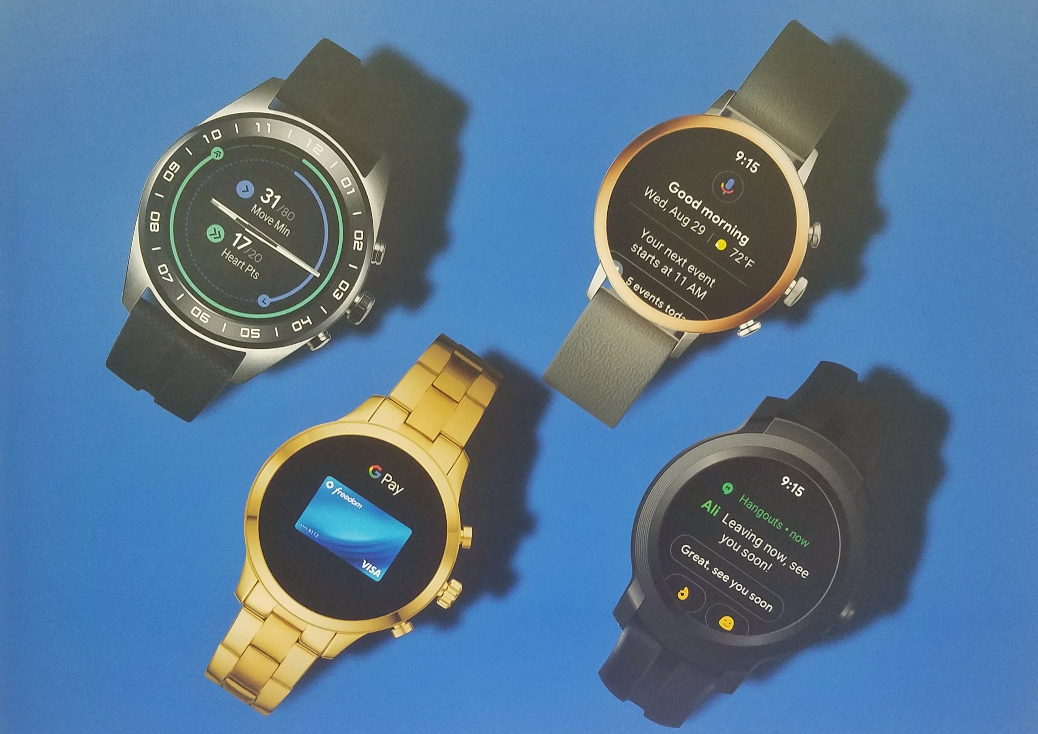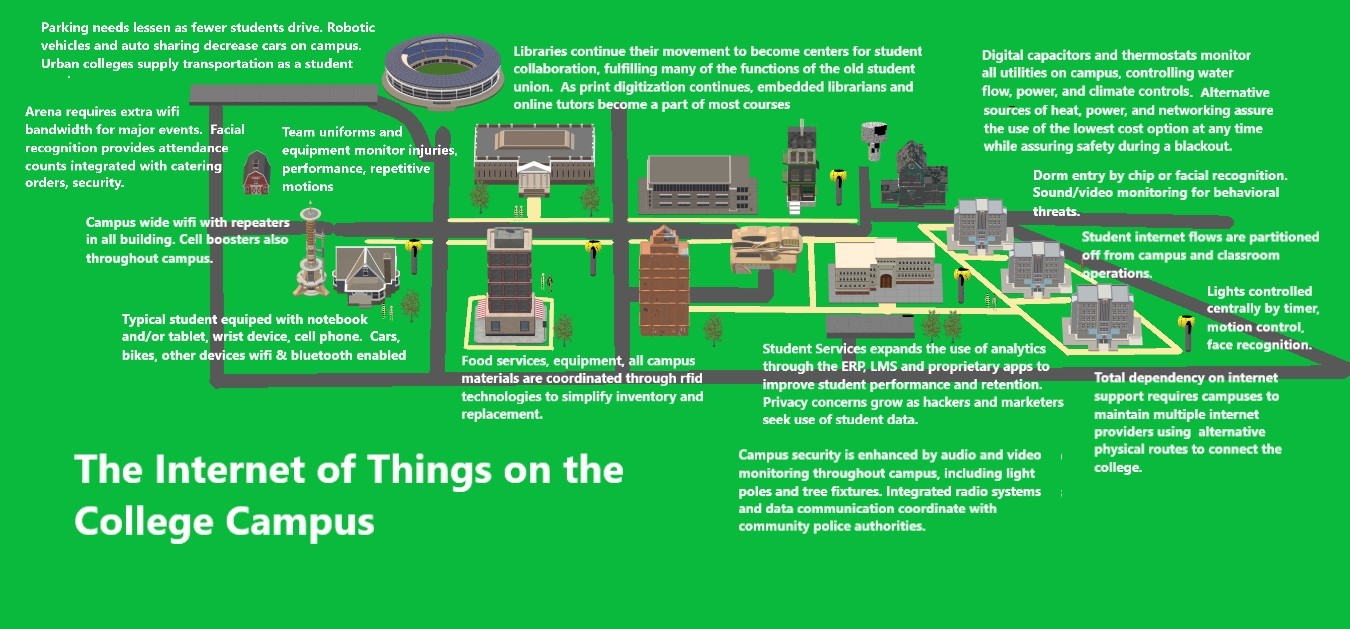The Connected Student and the Internet of Things
Published by: WCET | 4/9/2019
Tags: Distance Education, Technology
Published by: WCET | 4/9/2019
Tags: Distance Education, Technology
Today we welcome Mickey Slimp, Executive Director of the Northeast Texas Consortium of Colleges & Universities (NETnet), located at the University of Texas Health Science Center at Tyler, where he also serves as an associate provost of academic affairs. In his blog, Mickey discusses the realities of thriving in an Internet dependent society. More importantly, he touches on the challenges and exciting opportunities that exist for all those involved in education. Thank you for your helpful insights Mickey!
–Erin Walton, contract editor for WCET
My breakfast meeting was nearly over when the texts from the technology team started coming in. Stepping outside, a robo-call followed by a real person notified me that regular power was completely out at the office. The entire building was in an alarm state.

Before I go any further, first a little context. Our team coordinates an educational and research network for northeast Texas, covering an area about the size of South Carolina. We’re located within the facilities of a university health science center, replete with medical residencies, degree programs, research labs, a hospital, and multiple clinics. The network interconnects about twenty community college and regional university campuses, a similar number of rural medical clinics, and twenty-five or so school districts.
So, spring storms grab our attention and an alarm gets noticed.
The first step I took with my technical team was to confirm that the network was untouched. Back up batteries and a generator were working just as designed to keep the core functions unscathed. When I pulled onto the campus, I quickly saw that all non-emergency essential areas were dark: office lights were out, coffee makers were off, and the regular ambient noises were missing.
In addition to the office being dark, the desktop computers were dead. As a result, meetings were postponed, and projects were delayed throughout the morning.
A February Inside Higher Ed piece detailed the recent plight of Amherst College following five days of Internet silence from an aging campus network. One of the descriptors used was “Catastrophic.” Beyond losing access to wi-fi and their online courses, centrally controlled doors defaulted to “unlocked,” laundry and other vending functions failed, and printing disappeared.
The Internet is now inextricably integrated into nearly every element of the educational process. From the classroom to research to validation, students and faculty depend on digitized connections using their devices. And when the Internet “is down,” progress comes to a virtual standstill.
How did we get to this point, and how does this dependence upon our technologies impact our students and our colleges?
Where microcomputing components are embedded into our devices, cars, tools, and even our clothing to provide analysis, make decisions, and take actions, there exists what is called the “Internet of Things.” Using “IoT,” our handheld devices connect to and through the Internet. Our buildings, highways, and community infrastructure likewise connect in much the same way.
For today’s student, an IoT driven world is quickly becoming the norm. Born in the 21st century, college freshmen have had cell phones around them since birth. Many of these students are ignorant of a world where the World Wide Web did not exist, and their expectations are set to have instant information, instant communication, and instant entertainment.
Changes in the online environment have impacted everything. Most industries have reworked their business plans to collect and push out information, capital, and services through web-based interactions and devices. In the field of higher education, the impact has just begun.
Millennials, the younger Gen Z students, and even Gen Xers have become attuned to a 60-second or faster response time. Students expect to grab a phone, pull up a website, and find whatever is needed in less than a minute, and their Internet embedded devices have altered their expectations and even our power structures. Less than a decade ago, everyone had to go somewhere to gain information. Using analytics generated by social media and Internet infused devices, relevant (although not always accurate) information is pushed to the users, changing an entire social dynamic.

Student options for engagement are growing. The traditional classroom is an idea of the 19th century, and this vision placed students around their teacher with everyone in a dedicated structure for learning. The traditional model happens today for only about 60% of community college students. Over the next decade, those numbers should decline to something like 40%. Should funding and structures change to place more students in college, non-classroom options will likely play an even greater role.
IoT-generated analytics are altering the process of teaching, from planning to the scheduling and delivery of personalized instruction. The analytics provided by the various data-centric predictive foot-traffic monitoring tools such as ID chips and facial recognition can be integrated directly into student information systems. Knowing how many students are going to attend which classes at what time can offer schedule variations to turn logjams into a smoother flow of pedestrians, easing congestion, frustrations, and flare-ups.
Simultaneously integrated through distance learning, the Internet of Things movement is diffusing even more instructional changes throughout the college. The growth of instructional analytics, documenting student participation in a course, visits to a website, uses of library and external web materials, and the focus of an eye on a page, have emerged from the learning management system structure.
An addition of smartphones engrained within the daily routine of the student is a key component of the Internet of Things (IoT). Personal devices are already mainstays of distance and classroom-based instruction and will become essential as students lead the way into a student empowered learning environment.
Today’s student does not believe that he or she should have to ask for enough Wi-Fi to do whatever he or she wants. Students simply expect it to be there. With the emerging Internet of Things and personal demands for Internet-based entertainment, the need for faster connection speeds has exploded. Consider a small college campus with maybe 2,000 students attending at any one time. If we assume that each student carries a laptop, a tablet, a smartphone, and perhaps a smartwatch, it is possible to have 6,000 or more devices vying for the college network download speed and capacity.

The reality is that campuses are becoming as dependent upon Internet access as they are with basic utilities such as climate controls and even electricity. Rural campuses in particular continue to struggle to keep up with the demands, from classroom and dorm support to the campus wireless network. One common question is how large a connection is enough? Recommendations are for one gigabyte per 1,000 students, but reality paints a different picture. In an ongoing battle, the end point and the demands from our students will keep moving us ahead.
Our leadership will need to stay abreast of these realities and student needs and move forward.
For further information, you can purchase How the Internet of Things Is Changing Our Colleges, Our Classrooms, and Our Students. Use the code RLEGEN19 to gain a 20% discount. You can also order it from most bookstores.

Mickey Slimp
Executive Director of the Northeast Texas Consortium of Colleges & Universities (NETnet)
Associate Provost of Academic Affairs, The University of Texas Health Science Center at Tyler
References
[i] McKenzie, Lindsey. 2019. “No Email, No Wi-Fi, No LMS,” Inside Higher Ed, Feb. 21, 2019, 1150 Connecticut Avenue NW Suite 400, Washington, DC 20036. Accessed from https://www.insidehighered.com/news/2019/02/21/almost-week-no-internet-amherst-college.
